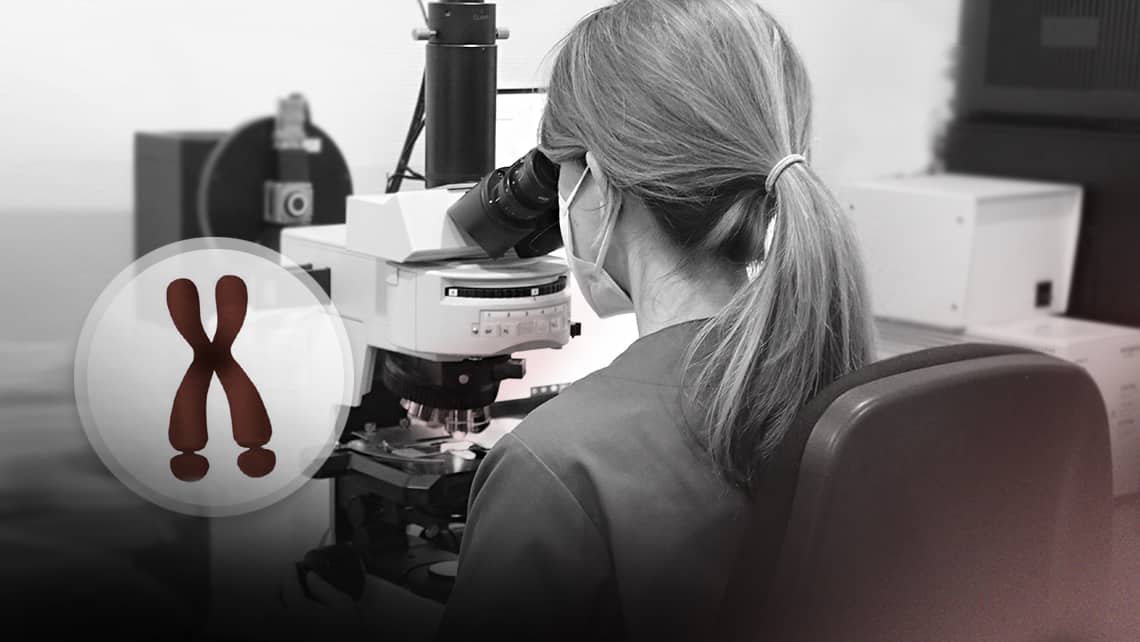
Fragile X chromosome syndrome and fertility
Índice
- 1 What are the physical characteristics and symptoms of the X Fragile syndrome?
- 2 What does the X Fragile syndrome genetic study consist of?
- 3 What is the relationship between fertility and the FMR1 gene?
- 4 Is there a treatment for X Fragile syndrome?
- 5 Can the Fragile X Syndrome transmission be prevented?
- 6 Is there any therapy for premature ovarian failure in premutation carriers?
What are the physical characteristics and symptoms of the X Fragile syndrome?
Fragile X syndrome is one of the most common causes of hereditary intellectual disability.
The gene responsible for the disease is known as FMR1 and it is found in the X sex chromosome. As a result, both the transmission and the severity of the disorder varies in each sex. As a general rule, men are said to suffer from it whilst women are said to transmit it although they may suffer from a less severe version of the disease.
In addition to intellectual impairment, affected males have very characteristic physical features such as a broad forehead, large ears, hyperextensible fingers and flat feet.
What does the X Fragile syndrome genetic study consist of?
There is a repeat region in the FMR1 gene (expansion) and its size determines whether or not the individual has the disorder or not, as indicated below.
- When its size is between 5 and 55 repeats, individuals are normal.
- Over 200 repeats (full mutation) means the individual has the disorder. The reason for this is that an elevated number of repeats causes FMR1 gene arrest or inactivation. In males with a single copy of the gene, inactivation leads to an absence of FMR1 protein and this in turn causes the set of clinical symptoms known as fragile X syndrome.
- There is an additional third possibility (premutation) that is characterised by between 55 and 200 repetitions. In such cases, function of the FMR1 gene is not affected to such an extent that symptoms are present but the problem can arise in offspring since premutation tends to increase in size as it is passed on from generation to generation. If the 200 repetitions threshold is reached, the child will have fragile X syndrome.
What is the relationship between fertility and the FMR1 gene?
The X Fragile syndrome genetic study consists of finding out, using the PCR technique, the number of repeats the patient has, to determine whether he or she is in the normal range, premutated or complete mutation.
On the other hand, the state of the premutation can lead to two additional medical conditions in adults:
- FXTAS: Fragile X Associated Tremor/Ataxia Syndrome. This is characterised by a tremor and ataxia (inability to coordinate movement) in men over 50 years of age. Only around 20% of men with premutation in the FMR1 gene suffer from this.
- Premature ovarian failure. Patients who are carriers of the premutation form are at an increased risk of developing conditions ranging from poor ovarian reserve to premature menopause. Around 20% of women with premutation suffer from premature ovarian failure in comparison with 1% in the rest of the population.
Is there a treatment for X Fragile syndrome?
In addition to intellectual impairment, affected males have attention deficit due to hyperactivity problems, anxiety, depression, aggression and self-harming behaviour. All these symptoms can be treated with different drugs to improve the patient’s clinical picture.
Can the Fragile X Syndrome transmission be prevented?
As with any other hereditary disease, genetic guidance is important in families with a background of fragile X syndrome. In cases of this kind, couples must be given advice so that they can choose freely whilst also being aware of the risk they are undertaking and of the therapeutic options available to them: prenatal diagnosis, PGD and egg donation.
An analysis of the number of repetitions in the FMR1 gene is recommended in patients with poor ovarian reserve or premature menopause. Should premutation be identified, appropriate genetic guidance must also be provided since there is an increased risk of having a child with fragile X syndrome.
Is there any therapy for premature ovarian failure in premutation carriers?
At Instituto Bernabeu, we have a Poor Ovarian Response Unit. It comprehends medical specialists in reproductive medicine, molecular biology, genetics and reproduction biology who focus on caring for and treating cases of poor ovarian reserve.
The IB’s Low Ovarian Response Unit allows patients with early ovarian failure to benefit from the latest innovations for the diagnosis and treatment of this fertility problem. As such, personalised solutions can be given to many couples who would otherwise have to turn to egg donation.
Dr José A. Ortiz, biochemist at Instituto Bernabeu.
